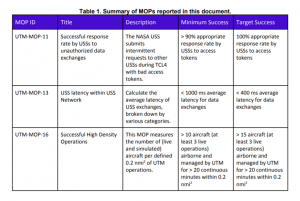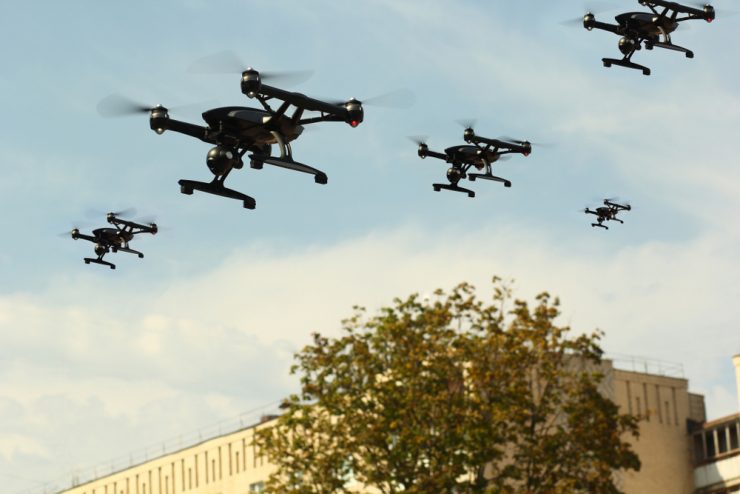NASA has published its UAS Service Supplier Network Performance Results and Analysis from Flight Testing Multiple USS Providers in NASA’s TCL4 Demonstration report which has measured the results of UAS service supplier (USS) performance in three areas: unauthorized data access, latency within the USS network and high density operations.
The first Measure of Performance (MOP) “Successful response rate by USSs to unauthorized data exchanges” established a minimum success bar of 90%. “On a per-USS view, five of the seven USSs met the minimum success criterion,” said the report. “Aggregating all test results for all flight days across all USSs, the result was a 89.70% pass rate, failing to achieve the overall minimum success criteria.”
In the “USS latency within USS Network” MOP, which calculates the average latency of USS exchanges, broken down by various categories the UTM project established a minimum success criteria of an average latency of < 1000ms and a target success of < 400ms for various data exchanges. According to the report: “Over the full set of messages, this MOP was met, with an overall average latency of 189.4 ms. When broken down by essage type, the minimum success criteria were met for all but the Negotiation message type. Variability was high amongst most message types (over 2 seconds of standard deviation for Operation, Negotiation, and UTM Message exchanges), with tighter standard deviation on Position and Discovery messages (623 ms and 110 ms, respectively).”
Finally, in the final MOP “Successful High-Density Operations” which measures the number of (live and simulated) aircraft per defined 0.2 nmi 2 of UTM, the trial “indicates that a reasonable volume of small UAS traffic can be handled by the proposed UTM architecture.”
“There are still open questions about scalability that were not directly addressed, for example having this density of operations in several locations in a given city would require appropriately scaled infrastructure,” said the report. “However, it will be some time before much higher densities from those tested in TCL4 will become a safe reality. Thus the scalability issues can be addressed in the meantime with no major architectural blockers for reaching reasonable densities.”
According to the study text:
“The TCL4 Demonstration was the final in a series of demonstrations by the NASA UTM Project. Each demonstration from TCL1 to TCL4 increased in the number of system capabilities and the complexity of the operational environment. Overall, the UTM Project sought to demonstrate in concert with the FAA and industry how UTM should work and to investigate areas in need of further research.”
“TCL4 was executed at two of the FAA-designated UAS Test Sites: Nevada and Texas, managed by the Nevada Institute for Autonomous Systems and Lone Star UAS Center of Excellence & Innovation, respectively. The NASA UTM Project defined twenty Measures of Performance (MOPs) to aid in quantification of the UTM System as designed and tested in TCL4. Each of these MOPs will be reported internally to NASA. Additionally, NASA will report on most of these MOPs in various venues in the future.

For more information
https://utm.arc.nasa.gov/docs/2020-Rios_TM_220462-USS-Net-Perf.pdf




